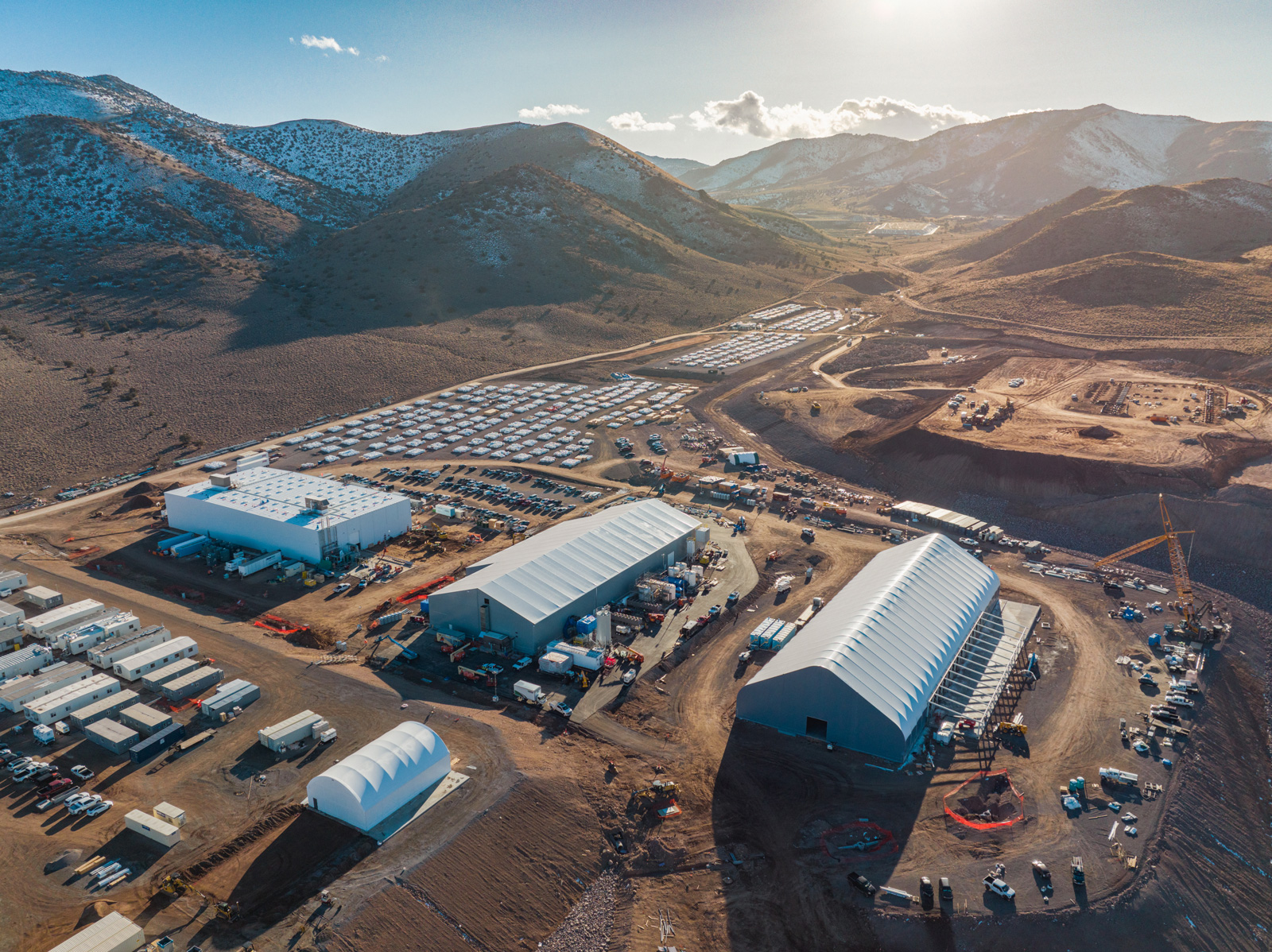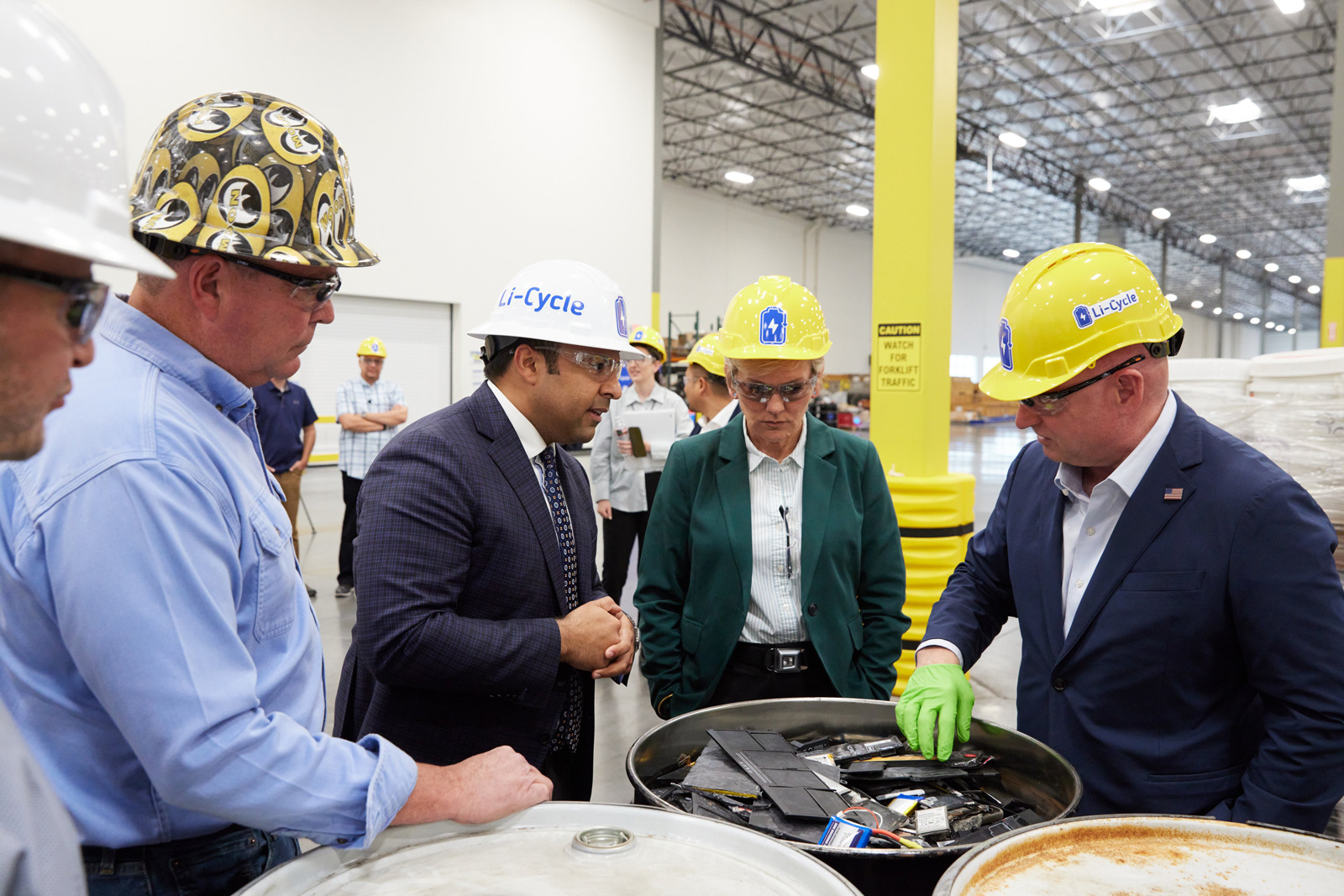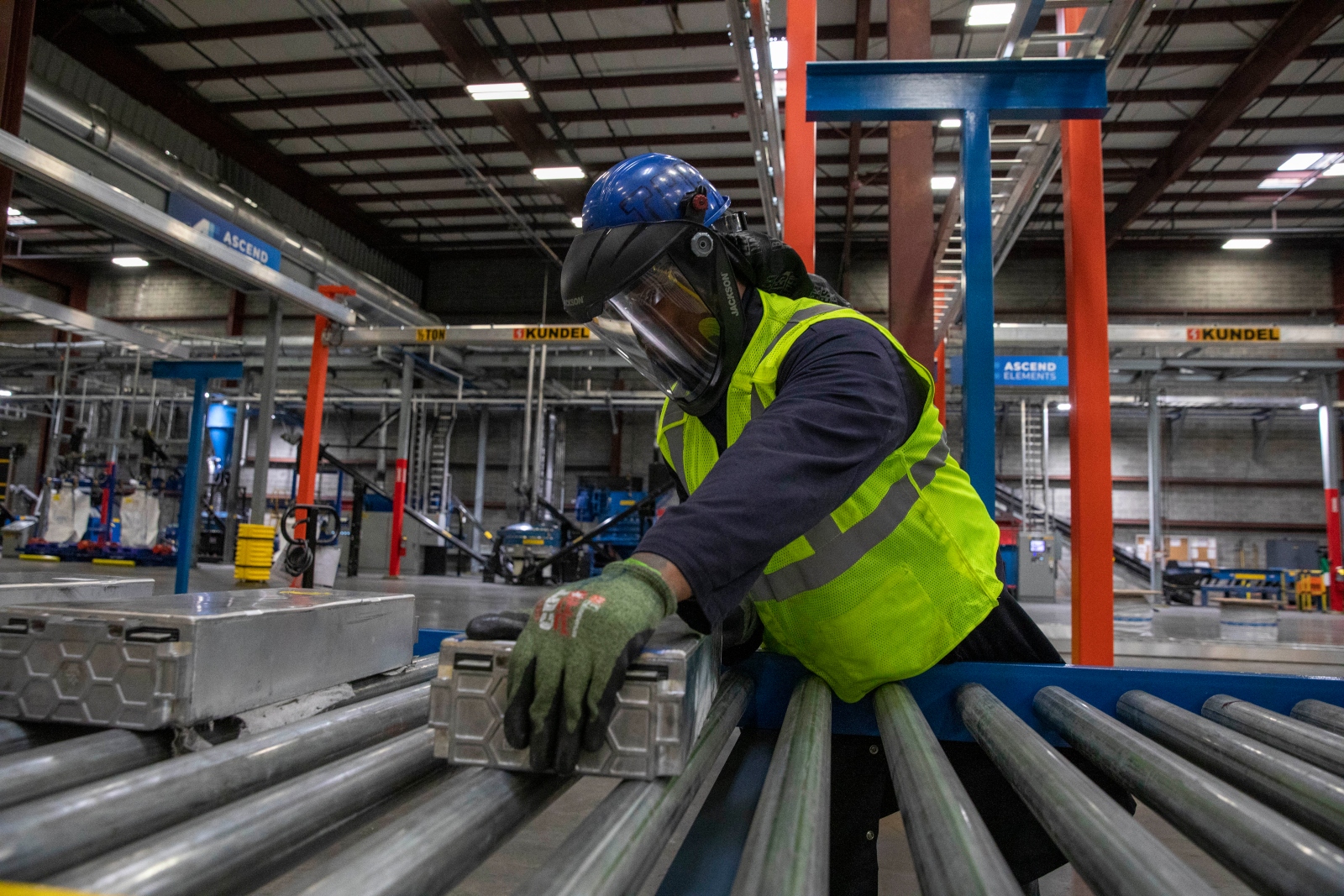The race to electrify the world’s vehicles and store energy will require batteries — so many of them, in fact, that meeting the demand we will see by 2040 will require 30 times the amount of critical minerals like lithium, cobalt, and nickel that those industries currently use.
That presents an enormous challenge, one exacerbated by the mining industry’s alarming allegations of labor crimes, environmental destruction, and encroachments on Indigenous land. There are ways to mitigate electrification’s extractive impacts, one of which may seem obvious: Recycle every battery we make.
Doing so would reduce the world’s need to mine these minerals by 10 percent within 16 years, because the critical materials in batteries are infinitely reusable. Eventually, a robust circular battery economy could all but eliminate the need to extract them at all.
Of course, that would require recovering every EV pack at the end of its life, a sizable undertaking as the United States prepares for hundreds of thousands of electric vehicles to retire by the end of the decade. A nascent ecosystem of startups is working toward that goal, and the Inflation Reduction Act includes tax credits to incentivize the practice. But some electrification advocates say those steps do not go far enough. While the European Union recently passed a regulation mandating EV battery recycling, there is no such law in the U.S. Proponents of a federal recycling standard say that without one, batteries that could be recycled might get left behind, increasing the need for mining and undermining electrification’s environmental benefits.
“We need a coordinated federal response to truly have a large-scale impact on meeting our demand,” said Blaine Miller-McFeeley, a policy advocate at Earthjustice, which favors a federal recycling requirement. “If you compare us to the EU, we are woefully behind and need to move much more quickly.”
That movement would have to come from Congress, according to Miller-McFeeley. Historically, however, regulating recycling has been left up to the states and local jurisdictions. The Biden administration has instead been supporting the country’s budding EV battery recycling industry, mainly by making it good business to recover critical materials.
The Department of Energy wants to establish a “battery ecosystem” that can recover 90 percent of spent lithium batteries by 2030. It has granted billions in loans to battery recyclers to build new facilities. Automakers are incentivized to buy those recyclers’ products, because part of the federal EV tax credit applies only to cars with batteries that include a minimum amount of critical minerals that were mined, processed or recycled in the U.S. or by a free-trade partner. Manufacturers also get a tax credit for producing critical materials (including recycled ones) in the U.S.

Daniel Zotos, who handles public advocacy at the battery recycling startup Redwood Materials, said in an email that a healthy market for recycled materials is emerging. “Not only is there tremendous value today in recycling these metals, but the global demand for metals means that automakers need to source both more mined and recycled critical minerals.”
Zotos said Redwood Materials agrees with the approach the federal government has taken. “The U.S. has in fact chosen to help incentivize, rather than mandate, recycling through provisions established in the Inflation Reduction Act, which we’re deeply supportive of.”
During a pilot project in California last year, the company recovered 95 percent of the critical materials in 1,300 lithium-ion and nickel metal hydride EV and hybrid batteries. The cost of retrieving packs from throughout the state was the biggest barrier to profitability, but Zotos said that expense will subside as the industry grows.
A tiny but growing secondary market for EV batteries is also driving their reuse. Most batteries will be retired once their capacity dwindles to about 70 to 80 percent, due to the impact on the car’s range. But they’re still viable enough at that point to sustain a second life as storage for renewable energy like wind and solar power.
B2U Storage Solutions used 1,300 retired batteries from Nissan and Honda to create 27 megawatts hours of storage at its solar farm just north of Los Angeles in Lancaster, California. Photovoltaic panels charge the packs all day, and B2U sells the stored power to the local utility during peak demand in the evening. “There is more value in reuse,” said company president Freeman Hall, “and we’re not doing anything more than deferring recycling another four or five years.”

Homeowners and hobbyists are embracing second-life batteries, too. Henry Newman, co-owner of the auto dismantler EV Parts Solutions in Phoenix, said customers buy his Tesla and Nissan Leaf batteries to convert classic cars or create DIY power storage at home. Any batteries that Newman can’t sell are picked up by Li-Cycle, a lithium-ion battery recycler with a plant in Gilbert, Arizona.
Newman said dismantlers and customers seem to want to do the right thing. “I know there will be people who don’t follow regulation, but my experience in the last six to seven years is that the industry is pretty conscious of it and tries to mitigate throwing these things in the trash,” he said. A law could help prevent mishandling, but Newman worries about any overreach or added costs that would come with more regulation.
But relying on the market to ensure proper stewardship is risky, said Jessica Dunn, a senior analyst in the clean transportation program at the Union of Concerned Scientists. “The recycling of cars has traditionally been a market-based environment,” she said. “But we’re dealing with a completely different system now. EV batteries are big and have a lot of critical materials in them that we need to get out of them no matter if it’s economical or not.”
Transporting EV batteries, which can weigh more than 1,500 pounds, is expensive (as much as one-third of the cost of recycling them), dangerous, and logistically challenging. Packs can catch fire if improperly handled, and they are classified as hazardous material, which requires special shipping permits. If the battery is in a remote location or is damaged, a recycler could deem it too much trouble to retrieve without a mandate to do so.
Dunn also said that not all batteries contain enough valuable materials for it to make financial sense to go through the trouble of recovering them. While most EV batteries currently contain high-value cobalt and nickel, a new generation of cheaper lithium-ion-phosphate, or LFP, batteries don’t use those metals. Tesla, Ford, and Rivian all recently announced they will use LFPs in some models.
“Just because there aren’t nickel and cobalt in them doesn’t mean that the lithium isn’t something that we should be recovering,” said Dunn. Redwood Materials said it collects lithium-ion phosphate batteries and uses the lithium within them to assemble new battery components, and that they collect all battery packs no matter their condition.
Finally, without guidelines in place, viable batteries may not be repurposed before being recycled, which Dunn said undermines their sustainability. “You’ve already put all that literal energy — and the environmental impacts that go along with that — into manufacturing these batteries,” she said. “So if you can squeak an extra five to 10 years out of them, that’s a really good option.”
With the U.S. poised to see about 165,000 electric vehicle batteries retire in 2030, Dunn said the time to ensure no batteries are stranded is now. “We’re not seeing a big wave now, but that’s coming, and so we need to be prepared for that.”

There has been some federal movement toward a recycling requirement. The 2021 bipartisan Infrastructure Investment and Jobs Act directed the Department of Energy to establish a task force to develop an “extended battery producer responsibility framework” to address battery design, transport, and recycling.
Extended producer responsibility, or EPR, is the approach that the EU took in its battery regulation that passed last December. EPR puts the onus on the manufacturer to ensure that what they produce is properly repurposed and then recycled, either by compelling them to pay for the recycling or to handle it themselves.
Thirty-three states have such laws, covering 16 products ranging from mattresses to packaging. “It is a paradigm shift for how waste is managed in the United States,” said Scott Cassel of the Product Stewardship Institute. But Congress has never passed such a law.

EV battery recycling might be the issue that could garner bipartisan support for one. Access to critical materials is a foreign policy and national security issue: China processes more than half the world’s lithium and cobalt, which means a steady domestic supply from recycling would help alleviate dependency on a geopolitical rival.
Building out the infrastructure to dismantle, recover, and process battery materials could also create thousands of jobs, an accomplishment most lawmakers are happy to align themselves with.
Republican senators alluded to both benefits when supporting the bipartisan Strategic EV Management Act of 2022, which passed as part of the National Defense Authorization Act last year. It requires multiple agencies to work on guidelines for “reusing and recycling” batteries from vehicles retired from the federal fleet.
Republican Senator Bill Hagerty of Tennessee said in a statement that the bill would ensure agencies could “reap the full economic benefits of EV investments … and do so in a manner that lessens our dependence on communist China.”
These laws set in motion efforts to design recycling frameworks, but the timelines to develop them span years. In the meantime, a few states are weighing their own mandates. “The states don’t want to wait for any of these bills to move,” Cassel said. “They’re ready to act right now.”
In California, a Senate bill would require battery suppliers to ensure that all “vehicle traction batteries” be recovered, reused, repurposed, or recycled. The bill passed unanimously this week and is headed to the Assembly. Senator Ben Allen, who introduced the bill, said there is bipartisan political and industry support for creating a framework. “You need a system in place,” he said. “That’s like saying, ‘Oh, the people will drive just fine to and from work. We don’t need traffic laws.’”
As it has been with other clean-vehicle targets, California could be a bellwether for a standard that would eventually take hold nationally.
“We’d love to create a system that could help to inform national policy,” said Allen. “And in this case, with this industry support and bipartisan backing, there actually may be a blueprint here.”




